The Corsair RM1000x and RM1000i 1000W Power Supply Review
by E. Fylladitakis on September 30, 2015 8:00 AM EST- Posted in
- Cases/Cooling/PSUs
- Corsair
- RM Series
- Corsair Link
The Corsair RM1000i & RM1000x PSU - External Appearance
Physically, the RM1000i and RM1000x are nearly identical to each other. Their chassis is sprayed with a matte black color that is well applied and fingerprint-resistant. Further aesthetic improvements include chamfered side edges and side stickers with the model's number printed on them.
Another sticker can be found at the top of the chassis, with the electrical specifications of the unit. Both models are using the same 180mm long chassis. Note that this chassis is significantly longer than a standard ATX design (140mm) and may not fit into some designs, especially very compact layouts.
The front of the PSUs are littered with the numerous connectors for the modular cables. The number and type of connectors is identical, with the sole exception that the RM1000x lacks the Corsair Link interface connectors and the test button. There is a very basic legend printed beneath each group of connectors. Both the PCI-Express and the CPU 12V cables use the same connectors, the 6-pin connectors are for the SATA/Molex cables and the split 10+18 connector is for the 24-pin ATX cable.
The Corsair RM1000i & RM1000x PSU - Internal Design
The 135mm fan responsible for the cooling of the RM1000i and the RM1000x is a Corsair NR135P fan. As even the UL certification number points back to Corsair, this technically is Corsair's own unique product and not a re-branded fan, though it's a safe bet that ultimately some hereto-unknown Chinese factory still makes it for them. It has a FDB bearing and a maximum speed of about 1500 RPM. At this point we should note that both of the units feature a "zero-RPM fan mode", meaning that the fan will not start before the load is significant and component temperatures will require active cooling.
Both the RM1000i and the RM1000x are virtually identical on the inside as well, with the mere difference being the RM1000x lacking the circuitry related to the Corsair Link interface. The OEM behind their creation is Channel Well Technologies (CWT) and both units actually are an upgrade of the design that the RM1000 was based upon.

RM1000i (left) & RM1000x (right)
The first notable upgrade is the heatsinks. The heatsinks of the RM1000 were preposterously small for a PSU with that kind of output and rightfully Corsair thought that they would be a good place to start upgrading. Most of their focus was placed on the heatsink cooling the transistors at the primary side of the transformer, which is a huge upgrade over the small solid block of metal we saw in the original RM1000. The heatsink holding the APFC diode and transistors is still a solid block but it is a little longer.
The second upgrade is the sizing and the quality of the components. At the primary side, the APFC capacitors are still supplied by Nippon Chemi-Con but they are one 680μF and one 470μF capacitor, for a whopping total capacitance of 1150μF. The original RM1000 had two 390μF capacitors instead. Note that the capacitors of the RM1000i and the RM1000x may look physically different, but they actually are identical (KMR vs KMW series). Only their physical proportions differ and Corsair may be using either model depending on their availability. All of the secondary side capacitors, electrolytic and polymer alike, are now supplied by Nippon Chemi-Con as well, not TAICON and CapXon.
There are no sizable heatsinks at the secondary side of the transformer. The rectifying MOSFETs are being cooled by small metallic bars, some of which are being used as current distribution bars as well. Corsair is also using a lot of silicon glue throughout the unit, in an effort to enhance its mechanical cohesion. They seem to have placed a particular amount of effort to minimize electromagnetic vibration noise, or "coil whine", by placing a lot of glue on every inductor of the unit. They even wrapped the larger inductors with insulating material.
This vertical PCB is the only part that is notably different between the two units. Where the RM1000i has a microcontroller, the RM1000x is plain and shorted to follow only a core, pre-programmed thermal control set of instructions. The RM1000i's stock fan profile is identical but can be adjusted via the Corsair Link interface.


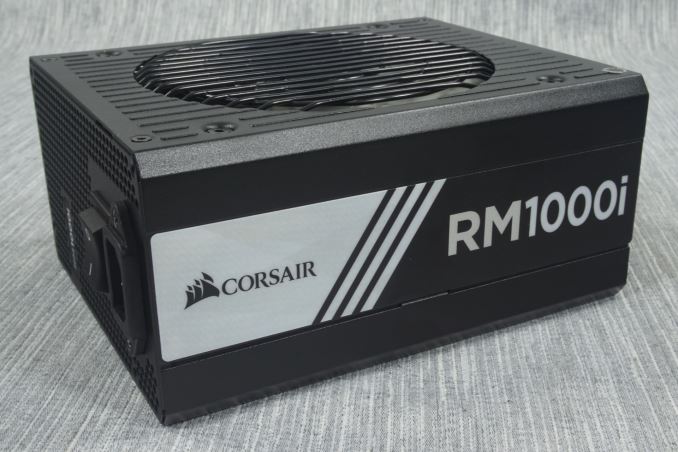
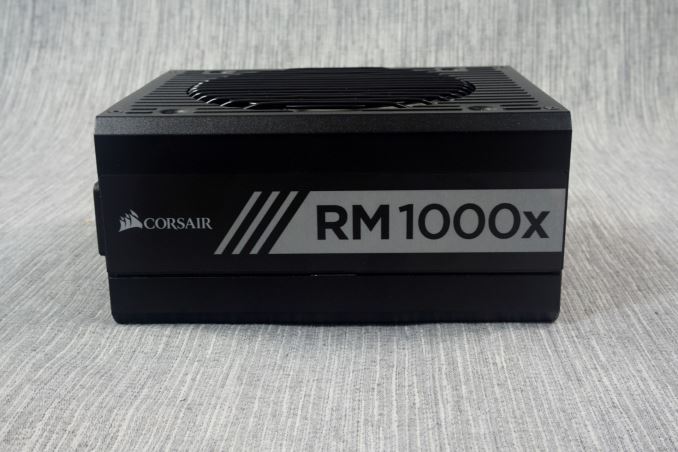
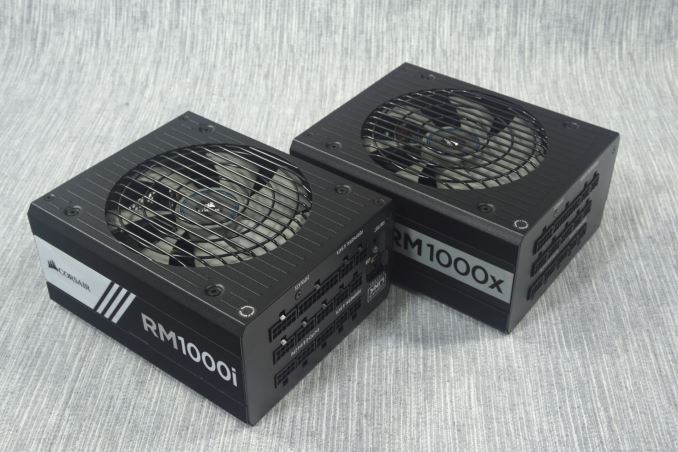
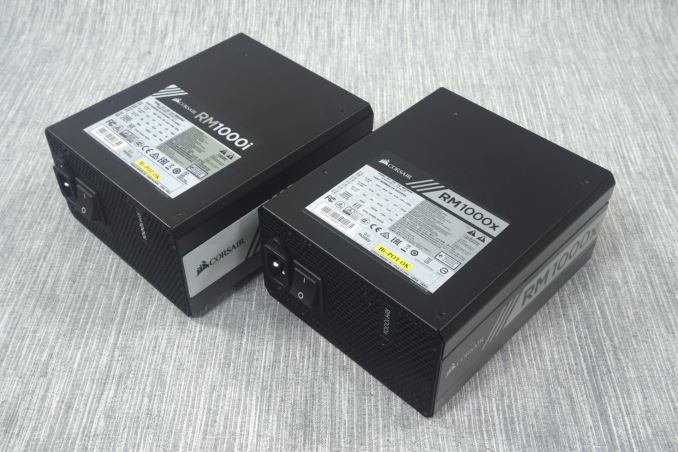
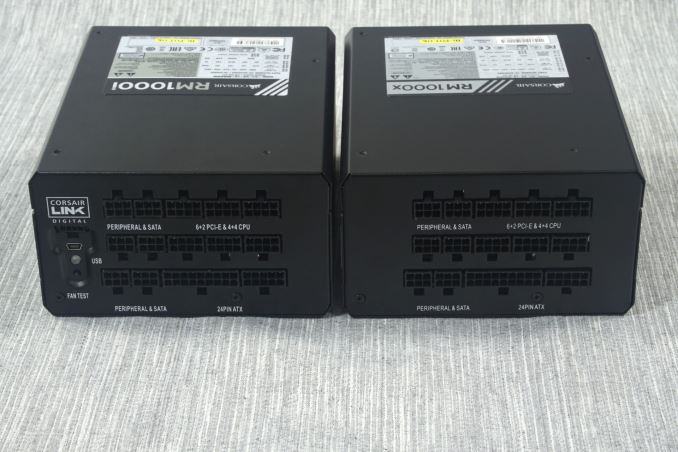
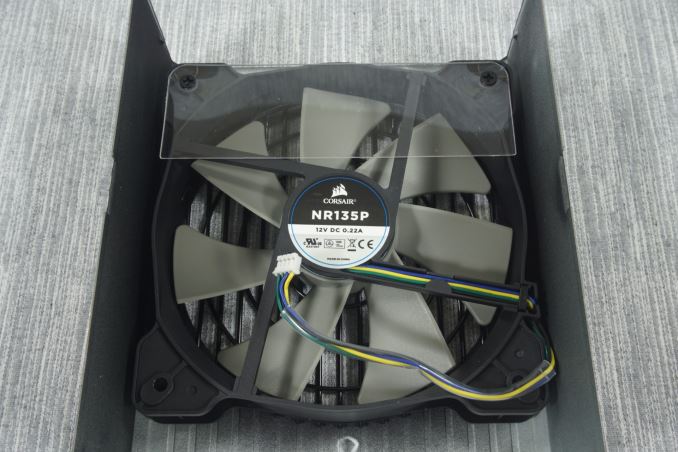






















47 Comments
View All Comments
jonnyGURU - Thursday, October 1, 2015 - link
Uhhh.... "Excited"? I was simply answering his question.elforeign - Wednesday, September 30, 2015 - link
I can vouch for the quality of this product, the RMi1000W in particular. I have had one since late July when I got it for my 24/7 BOINC Crunching rig. It powers my overclocked i5 and my 2 GTX 970's along with the other components in the system, SSD, HDD, 110i GT AIO etc. The ambient temps in my home are around 22c and thus, even when my system is pulling ~600watts the fan does not turn on because the PSU itself is not heating up that much even under load. Also, the efficiency meter from the Link interface marks around 91.7%The only knock one can give this PSU is the fact that the EPS, PCIE and ATX power cables are rather rigid and thick. It took some work to get the ATX cable into the motherboard. I brought up this complaint to Corsair. As of yesterday, Cablemod is now offering a set of EPS/PCIE/ATX individually sleeved cables for this PSU that I plan to purchase.
LaRock0wns - Wednesday, September 30, 2015 - link
For anybody going to get or make custom cables for this PSU, Corsair changed the connector for the ATX 24-pin cable that plugs in to the PSU. The PSU is a 18 + 10 pin connector instead of the standard 14 + 10 pin.HOOfan 1 - Wednesday, September 30, 2015 - link
They also have capacitors on the cables to aid in ripple suppression...so getting custom cables would give you different results from what is shown in the reviewlozikosaz - Wednesday, September 30, 2015 - link
Aren't capacitors useless in interior cables, which use direct current?AnnihilatorX - Thursday, October 1, 2015 - link
It will help suppress high frequency noise.DanNeely - Wednesday, September 30, 2015 - link
I've seen the 18+10 connector on a number of high end modular PSUs over the last year or so; I suspect it's the ODM's design not corsairs. Elsewhere I was told that the extra wires are used for voltage monitoring at the mobo end to actively adjust for any voltage drop.jonnyGURU - Wednesday, September 30, 2015 - link
It's not the ODM design. The extra 4-pins (actually, 3. But you can't have an odd number of pins on a connector) are for +12V sense, +5V sense and extra ground. Seasonic and Super Flower have been using this method in the past to improve voltage regulation. Corsair started doing this recently as well for the same reason.To address the concern of using cables without sense and caps: You can do it, but you'll end up with the same level of voltage regulation and ripple suppression performance as an HXi.
extide - Wednesday, September 30, 2015 - link
Cant believe it's taken this long for high end PSU's to implement separate sense lines. Any decent lab grade PSU has had that for decades, lol.jonnyGURU - Thursday, October 1, 2015 - link
Correct!But it's a cost adder and since it's only something you'll see in reviews and pretty much any decent PSU is well within Intel's (sloppy) ATX spec, it's not very common.